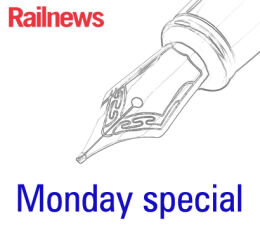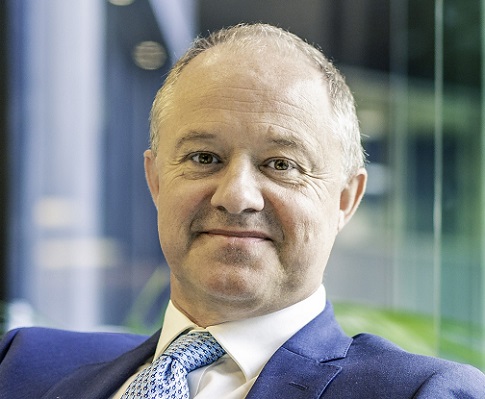Posted 20th October 2025
Wasting money on a gold-plated railway


Phil Marsh
Andrew Haines joined the railway in 1984, at a time when British Rail was reshaping itself – not in the sense of the Beeching closures, but changing its structure radically for the first time since the 1948 nationalisation by preparing to abolish the Regions and replacing them with ‘businesses’.
This programme, which became known as ‘Organising for Quality’, took the rest of the decade to complete, and at the end of it the passenger railway was now run by InterCity, Network SouthEast and Regional Railways.
Although BR was improving, it was very far from perfect. Andrew recalls: ‘The railway has changed immeasurably in many ways since I joined in 1984.’
He remembers some of the key elements of the industry, such as the safety record, accessible (or inaccessible) travel and the state of the major stations, many of which needed upgrading.
‘There was a fatal accident every year’
There was a fatal accident every year, more than 20 track workers were killed annually, wheelchair passengers were typically forced to travel in often filthy guards’ vans, and there were no ramps at many stations. Around 20 passengers a year died falling from slam door trains, which lacked secondary locking.
Passengers were forced away from the railways by very significant fare increases which were not the fault of BR, but because the government of the time was obsessed with railway costs.
In the early 1990s Nigel Lawson recession, Network SouthEast was on the verge of breaking even. This was partly as a result of political instructions to raise fares as much as possible.
The railway we have now, for all its faults, has been utterly transformed, according to Haines.
It is the world’s safest railway, while major, and many other stations, have been transformed along with rolling stock in the last 40 years. We carry about 2.5 times the number of passengers than British Rail.
Now we will soon have Great British Railways. Why is Haines in favour of this reform?
‘Because the biggest need is for a single guiding mind. If you have scarce capacity and more demand for trains, there needs to be investment and confidence that there will be a return for that investment whether you are a government or a private investor. This can only be delivered if there is a single body optimizing capacity of the system.
‘simplification and integration’
‘And that for me is absolutely at the heart of the biggest single reason I’ve spent the last seven years making the case for simplification and integration. At the heart of GBR, if you believe in a growing railway, and that successive Governments are going to invest in a railway network because of the broader social and economic benefits, then you need an entity that will bring those benefits.
‘In the 1980s, BR lived with impossible means. Quality of service and safety suffered but it absolutely lived within government constraints.
‘The Government set different priorities with privatisation and the early franchises were successful.
‘Now we need to reflect on priorities for the next decade.
‘The Bill is due at the House of Commons soon, and be through by Christmas. It may then have to wait for the second Parliamentary session to commence before going to the House of Lords.’
Haines thinks late summer 2027 is the earliest realistic time for GBR to go live. In the meantime, more operators will have been renationalised, with Chiltern Railways and GWR likely to follow Govia Thameslink Railway, which leaves the private sector on 31 May next year.
‘We have to start delivering’
Haines believes that the electorate see renationalisation as a simplification and consolidation as a proxy for that. The public do not like the confusion and the lack of accountability – and want public ownership.
But he warns: ‘We have to start delivering, and that’s why Lord Hendy has been a strong advocate for setting up Business Units sooner than later and the transfer of staff into DFTO is seen as the start of this. They will be separate companies but have an integrated profit and loss account, which makes a lot more sense of how you run the system on a whole business basis.
Andrew’s successor Jeremy Westlake, who started work today, has been working for 18 months on these accounts and is consolidating them into a single set for the first time since 1994.
He points out: ‘We have been actively dissuaded from creating this information because of the need to protect the separation of accounts between competing train operators so information was not being shared. A lot of people in the structure did not want to share information. The GBR bill removed much of this reticence.’
And what about those privatisation years? Have they left the railway better off?
Andrew says: ‘Why does Network Rail “gold plate” assets? Because that’s what we are told to do, more or less. It is an inconvenient truth that a lot of other people have no reason not to do it.
‘The system drives people to say “no” ’
‘Signal post telephones were installed on the Levenmouth line. Why? Because the RSSB Committee wouldn’t allow us to replace these despite GSMR cab communications, which we have had for 20 years or so. Cab Secure Radio is 30 years old. How many times would those telephones be used? I suggest they would never be used but they were insisted on by a committee of a majority of train operators.
‘Two and a half years ago one of our electrification engineers went to one of the RSSB committees and suggested raising bridge parapets immediately above the OLE rather than extending them the whole width of a bridge. If we did that, we would save £750 million across the network. This was rejected on sight because there was no upside for them. The system drives people to say “no” as there is no benefit to them, but there may be risk. They are not bad people but there is no system to measure the whole benefit.’
(This is an abridged version of a longer interview which will be published in the November print edition of Railnews.)
What do you think? Click here to let us know.
